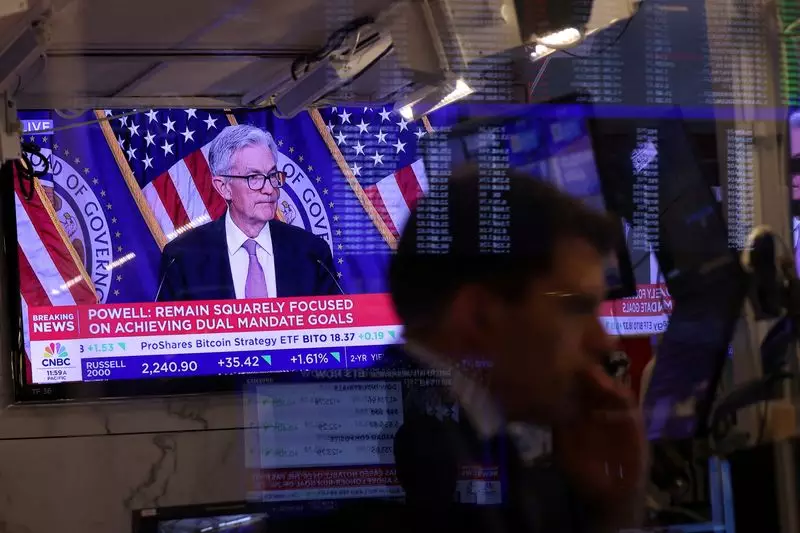On Wednesday, the Federal Reserve (Fed) made headlines by reducing the federal funds rate by 50 basis points. However, to dissect the implications of this announcement fully, one must look beyond the immediate cut. Significantly, the Fed’s revised outlook regarding when and where they anticipate the fed funds rate will eventually rest is of paramount importance. The indications are that the Fed now expects to exit a restrictive policy sooner than previously anticipated, while also adjusting its projection for a ‘neutral’ policy rate slightly upward.
This change suggests that the Fed is pursuing a more measured approach to easing, which may be interpreted in two ways. On one side, it could signal existing concerns regarding the labor market or broader economic stability. Conversely, the slight adjustments hint at growing confidence among policymakers regarding the economy’s ability to withstand shocks. This duality is essential for understanding the Fed’s intentions as they seek to navigate a path that could prevent an impending recession while still safeguarding the labor market.
The Fed has now set its target range for the federal funds rate between 4.75% and 5.00%, with the midpoint at 4.875%. Additionally, it has adjusted its long-term median forecast for the fed funds rate up to 2.9%, which is noteworthy for being the highest projection since 2018. This increase may seem modest at first glance, especially when compared to the figure of 2.5% maintained for several years prior. Nevertheless, the implications are substantial.
The Fed’s economists anticipate that the policy rate will decline to approximately 2.9% by the end of 2026—potentially sooner than prior estimates indicated, with previous projections suggesting it might take up to three years to reach this neutral level. This shift signals a movement away from a prolonged period where interest rates remained in a highly restrictive environment. According to recent analyses, policymakers have been candid about the real fed funds rate positioning itself above the natural rate, which typically marks the dividing line between stimulative and restrictive policy conditions.
Several analysts have posited that U.S. monetary policy has been exceedingly restrictive for some time. The Federal Reserve’s own staff previously noted that the real rate of interest as of March stood significantly above its historical levels—around 1.15 percentage points over its natural rate. In fact, the adjusted real fed funds rate reveals the highest numbers seen in 17 years, further underlining the restrictive stance of recent monetary policy.
Moreover, research from investment bank JP Morgan pointed to a stark conclusion: Current monetary conditions reflect the tightest constraints seen in three decades, particularly when evaluated against the theoretical ‘R-Star’—a concept denoting the real interest rate that neither promotes nor hinders economic growth during times of full employment. Many financial commentators have either downplayed or criticized R-Star for its theoretical nature; however, it undeniably plays a central role in modern macroeconomic frameworks.
In light of the Fed’s updated projections, it is imperative to draw some inferences about future policy directions. With the new midpoint of 4.875% and an anticipated long-run neutral rate at 2.9%, the consensus among analysts suggests that Fed policy may currently be operating within a restrictive range of approximately 200 basis points. This effectively means the federal funds rate will not be viewed as neutral until it drops by a substantial 200 basis points. This lays the groundwork for policymakers aiming to stimulate the economy while carefully managing inflation targets.
It is also crucial to recognize that these shifts are not set in stone. Fed Chair Jerome Powell has made it abundantly clear that upcoming policy deliberations will be contingent upon various economic indicators, thus reinforcing the notion of a data-driven approach. Investors, while interpreting these signals, must remain attuned to the fact that the Fed is committed to making informed decisions that are responsive to economic conditions. As the Fed maintains its vigilance, the overarching aim remains: navigating a path toward an economic ‘soft landing’ that shields labor markets and sustains growth.
While the Fed’s recent adjustments present a nuanced landscape for policymakers and investors alike, their implications touch deeply on the core of economic stability and future fluctuations in the monetary policy arena. The careful recalibration of projected interest rates reflects a belief in the resilience of the economy, reminding us of the delicate balance the Fed must maintain in its quest for stability.

